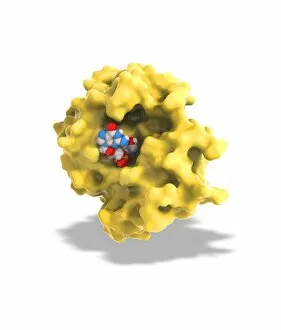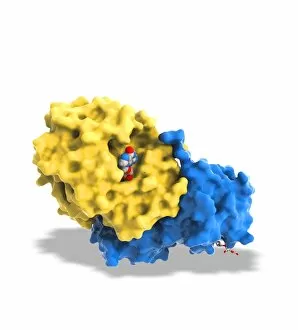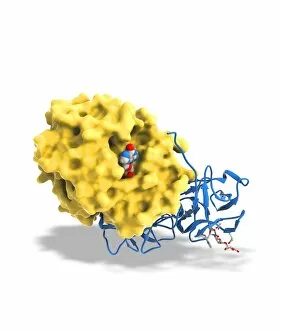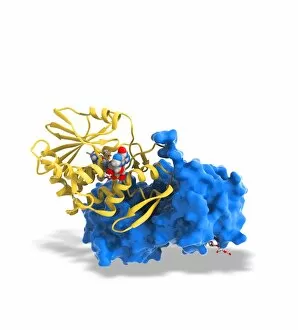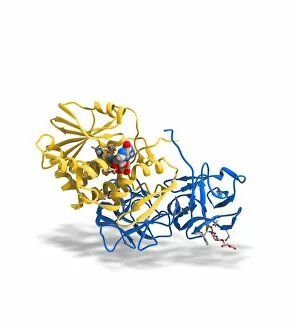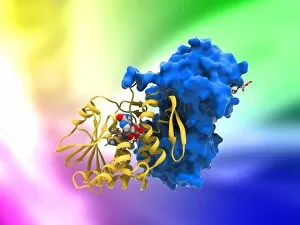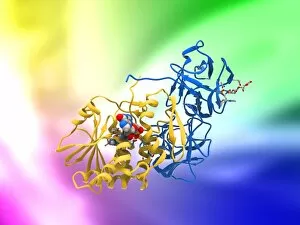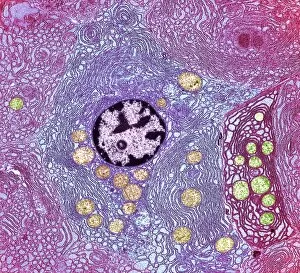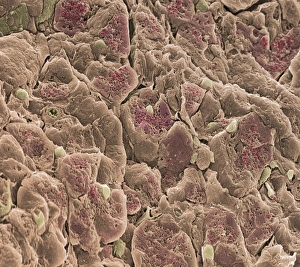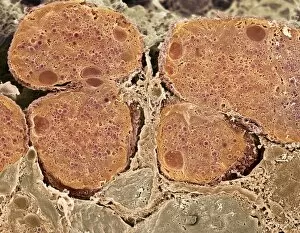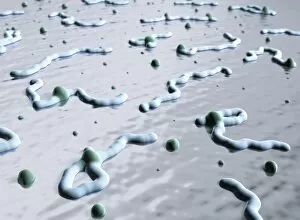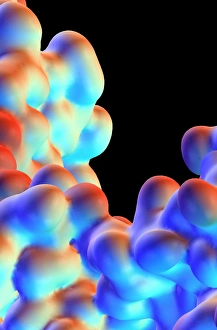Enzymatic Collection
"Unlocking the Secrets of Enzymatic Power: Exploring Ricin A-chain and Hammerhead Ribozyme Molecules" Enzymes
All Professionally Made to Order for Quick Shipping
"Unlocking the Secrets of Enzymatic Power: Exploring Ricin A-chain and Hammerhead Ribozyme Molecules" Enzymes, the tiny molecular machines that drive countless biological processes, continue to fascinate scientists. Among them, the enigmatic Ricin A-chain and Hammerhead ribozyme molecules stand out as captivating subjects of study. In artwork C017 / 3653, we delve into the intricate structure of Ricin A-chain. This potent toxin derived from castor beans possesses enzymatic activity that can disrupt protein synthesis within cells. Its complex architecture holds clues to its deadly mechanism. Artwork C017 / 3652 showcases another perspective on the Ricin molecule's composition. With its distinctive shape and arrangement of atoms, it exemplifies nature's remarkable ability to create powerful enzymes with specific functions. Moving forward in our exploration, artwork C017 / 3649 presents an intriguing view of a ricin molecule at a different angle. Each representation offers fresh insights into this enzyme's potential applications in various fields such as medicine or biotechnology. Meanwhile, exosome complexes take center stage in our investigation with their vital roles in cell-to-cell communication and waste disposal systems. These intricate molecular models are depicted here as fascinating networks of proteins and RNA strands (artwork not specified). Returning to ricin-related studies, artworks C017 / 3656 and C017 / 3655 provide further glimpses into this enzyme's structural intricacies. As researchers unravel its secrets piece by piece, they inch closer towards harnessing its power for beneficial purposes while ensuring safety precautions. Amidst all these discoveries lies artwork C017 / 3648—a depiction showcasing yet another facet of ricin's complexity—highlighting how each new finding adds depth to our understanding. Lastly but equally compelling is the Hammerhead ribozyme molecule—an RNA-based catalyst capable of cleaving other RNA molecules like a pair of molecular scissors.

